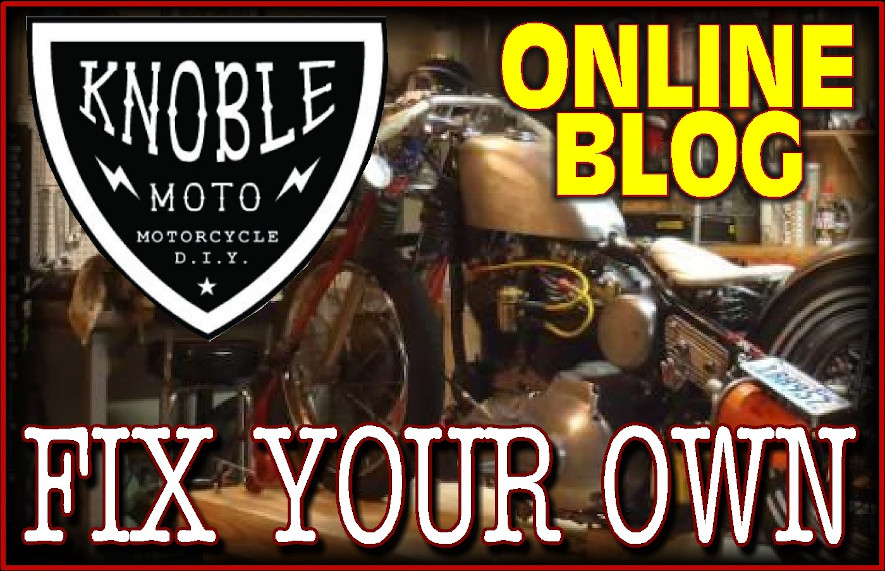
When it comes to customization, or increases in horsepower, swapping out and exhaust is one of the first things many motorcyclist look for. It doesn’t matter if it’s a V-Twin, Vintage or a Sportbike, the exhaust is rarely left stock.
There is nothing functionally wrong with the stock pipe, but it is not always very interesting, and often, especially on Harley’s, there is power left in the engine that can be obtained by an exhaust swap and a retune. These days modern sport bikes do not get the huge gains in hp, because the stock exhaust is generally performance tuned from the factory. However the stock pipe is often heavy due to the exhaust having to meet a required volume due to emissions requirements, so there is a notable weight reduction available in the aftermarket pipe.
For this multipart article, we are going to focus on swapping a Harley exhaust, though the same mechanical principals and procedures will work for almost any engine. First we will look at the common different types of exhaust: Drag pipes, Slip ons, 2 into 1, and True Duals
Drag pipes have that individual pipe sound that is very distinct. Performance wise they are good for high rpm ranges and they will show big HP numbers, but ONLY at high RPMS. They will struggle around town, at slow speeds, and low rpms. We all know the guy who has to rev his bike up or hammer on the gas to “clear it out” periodically. He has drag pipes doesn’t he?
2 into 1. The basic principal of the 2:1 is you exhaust holds a steadier pressure inside the collector and muffler throughout the rpms ranges. Plus each puff of the exhaust gasses helps pull the next one out the pipe. This makes for consistent and exhaust gas scavenging. This will help give you a nice flat hp and torque curve, across the entire rpm range. It generally also means that the power will come on at a lower rpm. So this will mean more power from light to light, more power coming out of a turn, and accelerating up a hill. Also this is a great setup for heavier touring bikes because the lower rpm range is where they often operate at. A 2:1 won’t be as loud as drag pipes and it will give you a nice tuned sound. More of a rumble than a thump thump.
Slip Ons are a great economical option for a moderate change in appearance, a little higher flow, a moderate hp gain and a better sound.
True Duals are a popular exhaust on big twin bikes. The are usually a louder pipe with a deep tone. The catch is that they do not make great horsepower unless you are moving a lot of air out your exhaust. This doesn’t happen until you run high compression pistons, large cams and high flow cylinder heads.
Remember when you are choosing and exhaust, that despite what the kid with the obnoxious Honda Civic will tell you, noise does not equal horsepower.
Because I have a racing background we will be focusing on an exhaust that makes big horsepower, the Supertrapp SuperMeg. This is a 2:1 exhaust that is tuneable to your liking. The removal and installation procedures apply the same to both big twin and sportsters.
Removal:
With a cool engine, spray all the fasteners down the penetrating oil, then let it soak in. If you have a fuel injected bike, unplug the O2 sensors. If possible, now is a good time to try and break the O2 sensors free, because the engine is holding the pipes in place. If you can’t easily get to them with a large wrench, it’s ok, because you can take them off once you get the pipes off the bike. Remember to be extra careful around the O2 sensor wires because they do not respond well to being bent around a lot, much like headphone cords.
Step one is to break the exhaust flanges free first. If they haven’t been off in a while, you will want to work the nut back and forth as you turn them out, to help keep from damaging the threads or breaking off the studs. I recommend this first because this is the point that is most likely to give you problems, so kill the anxiety, and get it out of the way.
From there, loosen the clamps that attach the mufflers to the head pipes. Back these bolts off until the clamps move freely. Spray the joints with penetrating oil. Next remove the bolts that hold the mufflers to the bike. *On baggers you will have to remove the saddlebags to get to these points. Once the mufflers are unbolted, you will remove them from the head pipe. This is often a bit of a challenge due to corrosion, but try working the pipe side to side while twisting it. If it is rusted, there is no easy way to do this, but I promise it will come apart. Swearing at it seems to help.
Once the mufflers are off, you can remove the bolts that hold the headpipe to the bike. After that, you can remove the nuts that hold the flanges to the cylinder heads. If you have a one piece head pipe it won’t fall right off the bike. First you will have to slide the flanges off as far as you can down the pipe. Second, you will have to pull the bottom of the pipe toward you, then move the inlets of the pipes toward the bottom of the heads, and pull towards you. There is a small amount of clearance that will allow you to remove the head pipe from the engine. You will not have to cut or bend anything, I promise. It may seem like a ring on the horseshoe puzzle at first, but just like the puzzle, there is a solution. You’ll get it, I believe in you.
Once you get the pipe off, You will need to remove the snap rings from the inlets of the pipes that hold the flanges on. You can generally remove and reuse these snap rings, but they have been known to break due to age and heat. The broken pieces can be sharp, so wear eye protection and take other appropriate measures for such procedures. If you break the snap rings, they are readily available at your favorite parts supplier.
Remove the old gaskets from the exhaust ports. Stock ones are a wire mesh, and the can be dug out with a small screwdriver or pick. No you cannot reuse them, even if they “look good” or you want to “save a few bucks”. Buy new ones! They are cheap! Once you get the pipes off, you can remove the sensors from the head pipes. It is good to give these a bath in penetrating oil before you tray and remove them. The threads often cook themselves in these, so it may be a challenge to break them free, but they should back right out once your get them to turn. If you damage the threads, you most likely either have a 12×1.25m or 18x.5mm thread so you can run a tap or thread chaser through the threads to clean them up. Remember to be vary careful with the wires on the sensors, because they are easy to damage.
Last, clean any corrosion off the mounting surfaces, that way you don’t have rust or debris interfering with re-installation.
Next month I will cover the details of new exhaust install as we put a 2:1 Supertrapp SuperMeg on an 05 Dyna.



